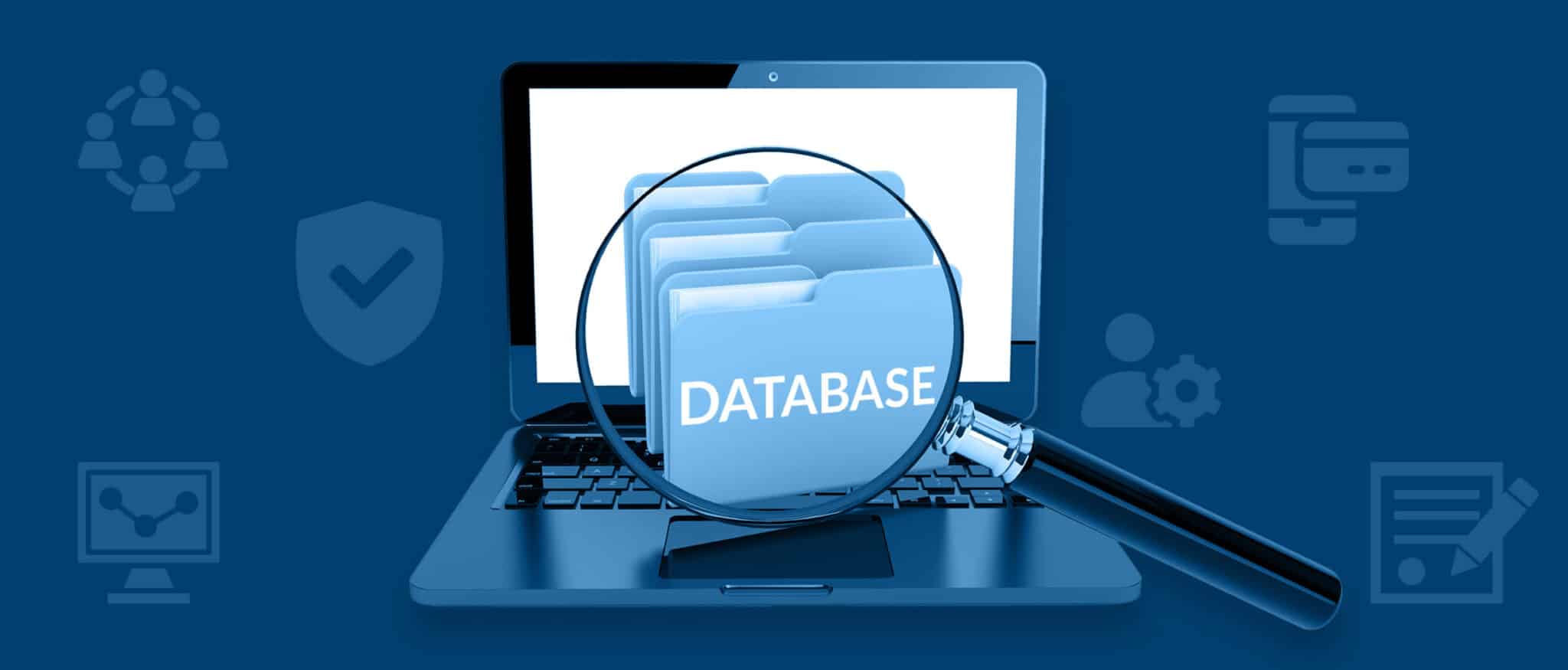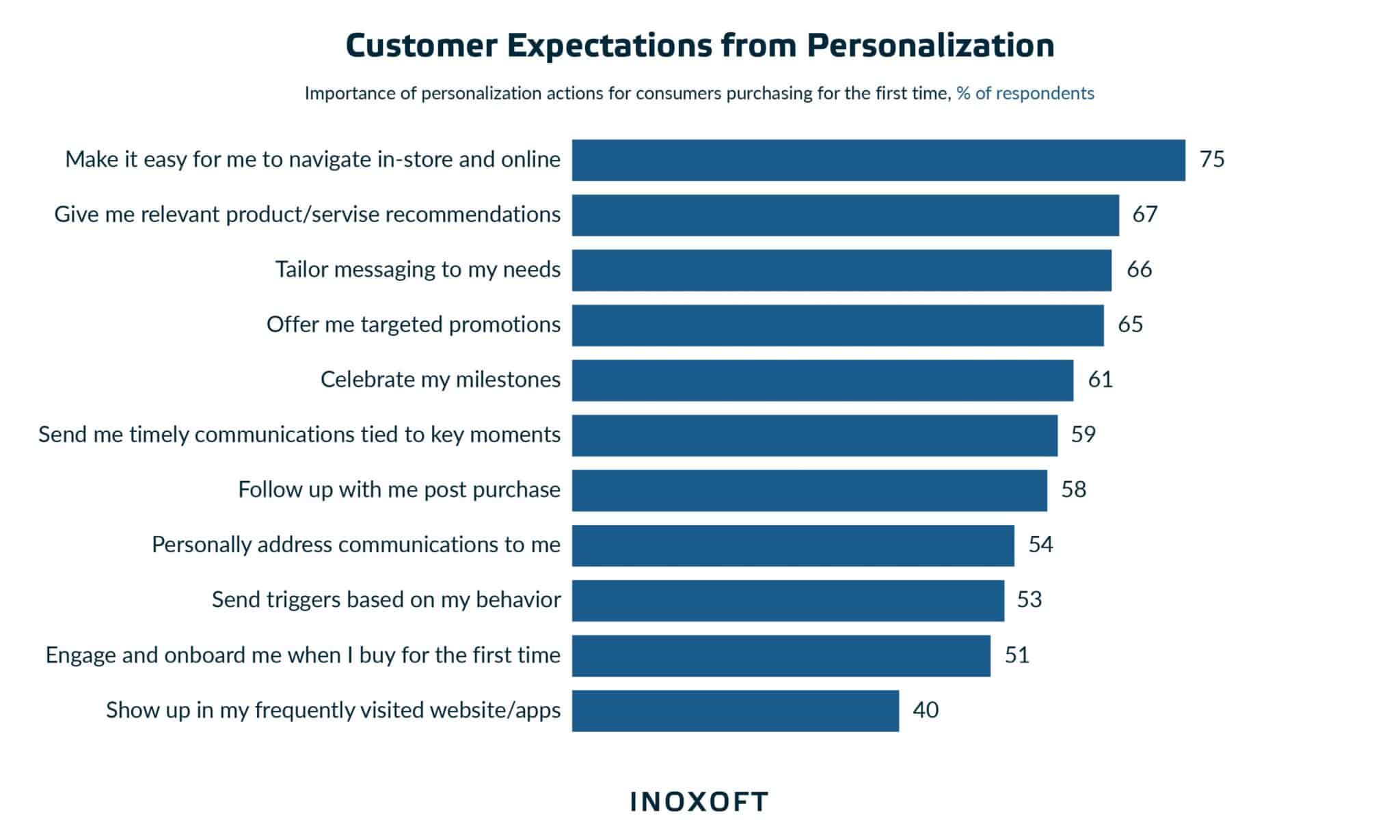Today, the era of assumption-based marketing is over. To thrive in the current landscape, digital marketers must adopt data-driven strategies. And the closer you are to the consumer, the greater the benefits you can get from implementing data-driven personalized marketing.
Improved targeting, higher conversion rate, customer satisfaction, and adaptability to changes are just some benefits of data-based personalization. As a Data Science and Big Data Analytics company, Inoxoft wants to share insights on data-driven marketing. In this article, we'll walk you through the benefits of this approach and the steps to implement it.
- What Is Data-Driven Personalization?
- Is Personalized Data-Driven Marketing Better Than Traditional Marketing?
- The Significance of Personalized Data
- Improve Customer Experience through Data-Driven Personalized Marketing
- Why Prioritize Data-Driven Personalization When Planning Budgets?
- Improved ROI
- Real-time tracking
- Competitive advantage
- Adaptability
- Efficient resource allocation
- Measurable insights
- Customer loyalty
- 5 Steps to Develop a Personalized Marketing Strategy
- Define strategy timeframes and goals
- Segment and create buyer personas
- Choose the personalization type
- Create tailored content
- Assess your results
- Data-Driven Marketing Tools
- Examples of Data-Driven Marketing
- Choose Inoxoft for Data-Driven Personalization
- Conclusion
What Is Data-Driven Personalization?
Data-driven personalization is using data to customize experiences, recommendations, or content. The process involves data collection, analysis, and interpretation to get insights into the preferences and behaviors of individuals and target groups.
You can use data from websites and apps, CRM systems, social media platforms, and third-party providers. Pay attention to demographic information, browsing, and purchase history, social media activity, location data, etc.
Is Personalized Data-Driven Marketing Better Than Traditional Marketing?
Is data-driven marketing better than a traditional one? Let’s compare these approaches
| Aspect | Data-driven marketing | Traditional Marketing |
| Targeting |
Precise audience targeting based on data analysis | Generalized targeting based on assumptions |
| Personalization | Offers personalized experiences tailored to individuals | Less personalized messages |
| Customer insights | Deep understanding of customer behavior and preferences | Limited real-time measurement and optimization |
| Real-time optimization | Continuous campaign monitoring and optimization | Limited real-time measurement and optimization |
| Cost-effectiveness | Efficient resource allocation and optimization | A less targeted approach, resulting in wasted resources |
| Adaptability | Data-driven feedback loop for measuring campaign performance |
Limited visibility into campaign effectiveness and impact |
The Significance of Personalized Data
If you still wonder about implementing data-driven personalization in your business processes, here are some numbers:
- A majority of B2C (71%) and B2B customers (86%) expect companies to have their personal information when interacting with them.
- More than half (56%) of consumers are likely to become repeat buyers after a personalized experience.
- Companies that use AI to build a recommendation increase conversions by 50%.
- 71% of customers expect tailored interactions, while 76% get frustrated when this doesn’t happen.
- About 69% of businesses increase investment in personalization despite economic challenges.
- Fast-growing companies generate 40% more revenue from personalization than their slow-growing competitors.
- The personalized experience encourages customers to buy (76%), recommend (78%), and repurchase (78%) brand products.
But why don’t all companies use this tool? The biggest obstacles include a lack of people and process training (42%), security or compliance issues (36%), poor organizational processes (34%), and poor quality data (31%). However, all these difficulties can be overcome by working with a reliable IT vendor like Inoxoft.
Improve Customer Experience through Data-Driven Personalized Marketing
You should use data-driven personalization to meet individual needs and preferences, delivering highly relevant experiences across various touchpoints.
Let’s see how customers want personalization to affect their shopping experience. Consumers expect help with navigation (75%), relevant product recommendations (67%), tailored messaging (66%), targeted promotions (65%), and milestone celebrations (61%).
Why Prioritize Data-Driven Personalization When Planning Budgets?
Marketers prioritize data-driven personalization when allocating budgets for several reasons.
Improved ROI
Leverage data to craft messages for specific audience segments, increasing the campaign’s relevance and effectiveness. This leads to higher conversion rates and revenue generation.
Real-time tracking
Get an opportunity to continuously monitor and measure campaign performance in real time. Track click-through rates, conversions, and customer engagement to make data-based adjustments on the fly.
Competitive advantage
Prioritize data-driven personalization to gain a competitive edge, offering more relevant and tailored experiences. Attract new customers, retain existing ones, and make your brand stand out in a crowded marketplace.
Adaptability
Quickly react to changing market conditions, user preferences, or emerging trends. Gather and analyze data to identify shifts in consumer behavior, refine your strategy, and adjust campaigns accordingly.
Efficient resource allocation
Optimize resource allocation by targeting specific audience segments with personalized messages. By focusing on the most promising ones, you can avoid wasting resources on reaching irrelevant audiences.
Measurable insights
Get valuable insights and metrics to measure campaign performance. This way, you’re able to track and analyze key metrics in real time, checking the effectiveness of their strategies.
Customer loyalty
Understand client preferences, needs, and pain points to address specific requirements and increase customer satisfaction. Satisfied clients become brand advocates, driving organic growth and reducing client churn.
5 Steps to Develop a Personalized Marketing Strategy
To develop a personalized data-driven marketing strategy, follow five crucial steps:
Define strategy timeframes and goals
Determine the strategy duration and the specific objectives. For example, increasing customer engagement, improving conversion rates, or driving revenue growth. Set measurable and realistic goals to evaluate the effectiveness of your marketing efforts.
Segment and create buyer personas
Analyze your data, considering demographics, geolocation, purchase history, browsing behavior, etc. Come up with buyer personas to represent the motivations, challenges, and preferences of your customers.
Choose the personalization type
Determine the specific types of personalization: tailored recommendations and offers, dynamic content, personalized email campaigns, or customized product suggestions.
Align those activities with the preferences and needs of your target audience. Consider the channels and touchpoints for interaction.
Create tailored content
Use data-driven insights to create personalized emails, landing pages, social media campaigns, and product recommendations. Remember that you can streamline personalization with the help of dynamic content tools or marketing automation platforms.
Assess your results
Monitor metrics like conversion rates, click-through rates, and engagement levels and analyze customer feedback. Measure the impact of your personalization efforts on your goals using analytics tools.
Identify areas of improvement and make data-driven optimizations. Tweak messaging, adjust targeting parameters, refine content, or explore new personalization techniques. Continuously iterate and improve your strategy based on insights from data analysis and customer feedback.
Data-Driven Marketing Tools
Data-driven marketing tools are software solutions that assist marketers in collecting, analyzing, and utilizing data to boost their marketing efforts. Let’s overview the most valuable ones:
- CRM systems. CRM systems store contact details, purchase history, preferences, and interactions, allowing marketers to segment their audience, track customer interactions, and personalize communication.
- Web analytics tools. Google Analytics and similar tools track website traffic, visitor demographics, user engagement, conversion rates, etc. They help marketers understand how users interact with websites and optimize campaigns accordingly.
- Marketing automation platforms. With HubSpot, Marketo, or Mailchimp, you can streamline marketing workflows, segment audiences, send personalized emails, and track campaign performance.
- Data Management Platforms (DMPs). These platforms allow marketers to create unified customer profiles by combining data from various sources. DMPs provide insights into audience segments and behavior patterns, helping to personalize marketing messages.
- Personalization and recommendation engines. These tools analyze user behavior, preferences, and historical data to deliver personalized product recommendations, content, or offers. Amazon and Netflix provide two vivid examples of advanced recommendation engines.
- A/B testing tools. Tools like Optimizely or Google Optimize enable marketers to test different versions of web pages, emails, or ads, making data-driven decisions.
- Social media analytics tools. Sprout Social and Hootsuite help companies track social media metrics, monitor brand mentions, and analyze audience behavior.
Examples of Data-Driven Marketing
Big world brands successfully use data and personalization to enhance their marketing efforts:
- Amazon. Amazon collects information about the browsing history, purchase behavior, and preferences of its customers to provide personalized product recommendations and targeted advertising. You may be familiar with their “Customers who bought this also bought”-feature and personalized email campaigns.
- Netflix. The company analyzes user behavior, viewing patterns, and engagement metrics to suggest relevant TV shows and movies. Netflix offers highly accurate content recommendations, increasing user engagement and retention.
- Spotify. Spotify generates personalized playlists such as “Discover Weekly” and “Daily Mixes,” which cater to each user’s unique music taste.
- Starbucks. Starbucks Rewards’ loyalty program uses data on customer purchase history, preferences, and location to deliver personalized offers, rewards, and recommendations.
- Nike. For the NikePlus membership program, the brand collects data about workout history and purchasing behavior. This way, Nike personalizes product recommendations, training plans, and offers.
Choose Inoxoft for Data-Driven Personalization
Inoxoft provides Data Science and Big Data Analytics services to help businesses extract valuable data insights and boost marketing efforts. We will accompany you at all stages of software development — from the discovery phase and UI/UX design to QA and post-launch support.
Here are some relevant services we provide:
- Data collecting, filtering, and structuring — to organize raw information
- Predictive Analytics — to detect trends, opportunities, and risks
- Natural Language Processing — to analyze complex datasets and gain insights
Conclusion
Data-driven marketing has a profound impact on customer experience, enabling businesses to deliver personalized and tailored interactions. With data analytics, you can gain valuable insights into user behavior, preferences, and needs. However, the integration of such technology requires certain expertise and experience.
Inoxoft, a data-driven solutions provider, is here to help you create meaningful connections with your customers and boost growth. Contact our team to unlock the full potential of personalized marketing and elevate your client experience to new heights.










